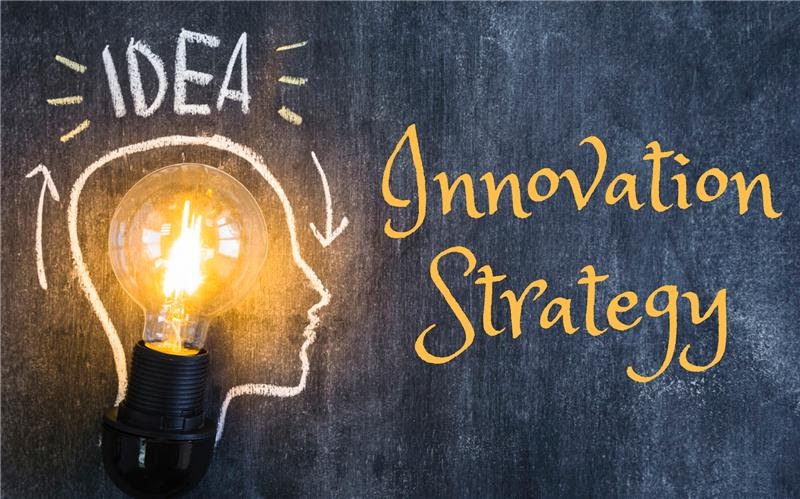How to Involve Stakeholders in Your Service Transformation
Your service transformation calls for a comprehensive involvement of your stakeholders and teams. This includes high levels of buy-in, commitment,...
6 min read
Jan van Veen
Sep 15, 2023 10:09:54 AM

Implementing a multi-faceted strategy in service transformation is vital for accelerating pace and sustaining momentum. Through stakeholder engagement, focused initiatives, and agile execution, you accelerate the transformation and ensure long-term engagement and energy among teams, making success sustainable.
In today's fast-evolving business landscape, service transformation is not just an option—it's a necessity. As businesses increasingly leverage digital tools and customer expectations continue to rise, companies must adapt by transforming their service offerings from an operational add-on to a strategic core.
The core challenge, however, is not just initiating this transformation but accelerating and sustaining the momentum once it's underway. This is easier said than done, and that's precisely why we're here today.
What are practical strategies to kick-start your service transformation and maintain a steady pace of progress?
In today's fast-paced digital environment, the clock is always ticking. The ability to quickly implement and scale new service initiatives has become essential in staying ahead. The digital age waits for no one, introducing new technologies and customer behaviours that can instantly change the rules of the game. Companies equipped to transform their services at a high pace can better leverage these changes to deliver more value faster.
The risk of moving too slowly is high. A sluggish pace can lock your organization into outdated methods and technologies, making it harder to respond to market dynamics. In worst-case scenarios, you could find your services becoming obsolete, overtaken by more agile competitors who can adapt more quickly to the new landscape. This isn't just about missed opportunities; it's about long-term viability. Slow movers don't just fall behind; they risk falling off the map entirely.
While the need for speed in service transformation is evident, it's essential to recognize that acceleration alone isn't the end goal. Sustainability must go hand-in-hand with speed to ensure long-lasting success. The aim is to create a service transformation journey that is not just fast but also resilient, able to adapt and thrive over the long term.
Concentrating solely on speed can lead to burnout, resource depletion, and hasty decision-making that might need to be revised later. On the flip side, an excessive focus on sustainability can result in over-cautiousness, slowing down the transformation to the point where opportunities are missed and competitors gain ground.
Striking the right balance is essential. A harmonious blend of speed and sustainability ensures that you can seize immediate opportunities without compromising your ability to adapt and excel in the future. It's not just about getting somewhere fast; it's about ensuring that you're in a strong position to stay when you get there.
A compelling vision and purpose aren't just taglines on a company website; they drive successful service transformation. They act as the North Star, guiding decisions, fueling engagement, and providing a sense of direction. In a landscape where change is the only constant, a compelling vision and a meaningful purpose can be the glue that holds everyone together.
Adopting a vision-driven approach makes the journey necessary and enjoyable and rewarding for all involved. When team members see the bigger picture and how their efforts contribute to realizing that vision, they are more likely to be engaged and motivated. The daily tasks, challenges, and changes become stepping stones toward something larger than themselves. In this atmosphere, driving change becomes an exciting endeavour rather than a draining obligation.
Emphasizing a mindset of constant change as a cultural norm ensures that the organization stays agile and responsive. It turns the traditionally disruptive notion of change into an expected and celebrated part of the organizational rhythm. When constant change is the norm and rooted in a powerful vision and purpose, accelerating and sustaining transformational momentum becomes a natural course of action, rather than a struggle.
Engaging stakeholders is a cornerstone of a successful service transformation journey. It's not enough to have a compelling vision and a well-thought-out strategy; you also need stakeholders' support and active involvement across the organization. This includes not just your service teams, but also senior leadership, cross-functional partners, and even external stakeholders like customers and suppliers.
Achieving stakeholder buy-in starts with clear and transparent communication. Consider how the service transformation aligns with broader business objectives and what specific benefits stakeholders can expect. Address their concerns and queries promptly and thoroughly, building trust through openness.
Next, involve them in the process. Leverage workshops, focus groups, or even one-on-one interviews to gather feedback and insights. This participatory approach enriches the strategy with diverse perspectives and fosters a sense of ownership among stakeholders.
Maintaining ongoing involvement is equally critical. Regular updates on progress, setbacks, and lessons learned to keep stakeholders in the loop. Celebrate milestones, no matter how small, and openly recognize the contributions of various stakeholders. This creates a positive feedback loop that sustains engagement and ensures you have the necessary support to overcome challenges and seize new opportunities.
Organizations often face a barrage of emerging challenges and opportunities in the thick of service transformation. These can easily derail focus from core strategic goals. Keeping your strategy on track involves strict alignment of initiatives with strategic objectives, thereby avoiding dilution caused by daily operational pressures or extraneous ideas.
Focused resource allocation is pivotal in ensuring that your critical initiatives have the means for successful execution. This doesn't just mean allocating sufficient resources upfront but also dynamically reallocating them as initiatives progress. High-performing initiatives should see an increase in resources, while underperforming or less important initiatives might require a resource cutback. This approach ensures that you're not just maintaining pace but doing so in a manner that maximizes impact and aligns with strategic goals.
To keep the strategy on course, consider these tips:
- Have clear governance structures that assess the strategic alignment of each initiative.
- Conduct regular performance reviews of initiatives to decide on resource reallocation.
- Involve key stakeholders in reviewing priorities to ensure that focus remains on strategic alignment.
By rigorously aligning initiatives with strategy and dynamically allocating resources, you create an ecosystem that's designed for both speed and sustainability in your service transformation journey.
One of the most potent drivers of successful service transformation is having a mobilized and empowered team that takes ownership of execution. This extends beyond mere participation; it's about creating a culture where each team member feels accountable for delivering strategic initiatives.
Mobilizing teams starts with clarity. Everyone should know the 'what', 'why', and 'how' of the initiative they are responsible for. Clear communication from leadership regarding the strategic vision and objectives can bridge the gap between broad organizational goals and individual team responsibilities.
Once your team understands the strategic alignment, the next step is empowerment. Empowerment here means providing the right tools, information, and resources to execute tasks effectively. This includes training programs, technology solutions, and even opportunities for cross-functional collaboration to facilitate holistic problem-solving.
Finally, encourage an environment of shared responsibility. Regular team huddles, performance tracking, and open feedback loops can ensure everyone is aligned and motivated. Celebrate the wins, no matter how small, to build momentum and further solidify the sense of ownership.
By mobilizing your teams in this way, you not only speed up the execution but also make the transformation journey more resilient and adaptable to changes, enhancing both the pace and sustainability of your efforts.
In today's constantly evolving business landscape, agility is not just an option; it's a necessity. Traditional, linear approaches to strategy execution are often too rigid and slow to keep up with the fast pace of change, especially in service transformation. Agile execution allows your organization to adapt and pivot in response to shifting customer needs, technological advancements, and market dynamics, all while maintaining alignment with your strategic goals.
Frameworks like Scrum and Kanban are particularly effective for agile execution as they prioritize tasks, enable short cycles for reassessment, and promote incremental improvements. These approaches encourage cross-functional collaboration and pave the way for a more responsive and flexible strategy execution.
Integral to agile execution is regular review meetings focusing on progress, quality, and strategic alignment. These sessions allow teams to assess how their initiatives contribute to the overall strategy, considering any new insights or changes in the business environment. They serve as checkpoints to recalibrate the team's efforts, ensuring the strategy remains on course and adapts to emerging realities.
Implementing the outlined strategies can substantially accelerate and sustain your service transformation.
Having a compelling vision and purpose can ignite passion and encourage a culture where constant change is welcomed.
Stakeholder engagement and focused initiatives ensure everyone is on the same page and resources are utilized effectively.
Mobilizing teams for execution advances your initiatives and fosters a sense of ownership and engagement among team members.
Lastly, adopting agile execution allows for flexibility and adaptability, ensuring you're always aligned with emerging market realities.
A crucial advantage of these strategies is that they cultivate teams that are not just aligned, but also engaged and eager. This enthusiasm is essential for maintaining a sustainable pace and long-term energy, empowering your teams to drive transformative changes without succumbing to fatigue.
The Service Transformation Summit on Mastering Service Strategy Execution covered the content of this article and more, such as:
This Summit, which took place on March 6-7, 2024, was a unique opportunity to deepen your understanding of these topics, connect with industry leaders, and engage in enriching discussions about real-world cases of your like-minded peers.
Subscribe for the our Impulse Letter
With regular updates about service news, trends and best practices.

Your service transformation calls for a comprehensive involvement of your stakeholders and teams. This includes high levels of buy-in, commitment,...

In today's complex landscape, the pace of service transformation is crucial, especially for product-centric manufacturing companies. Crafting a...

Driving your service innovation strategy is crucial for swift and effective transformation in B2B manufacturing. By aligning with corporate goals,...